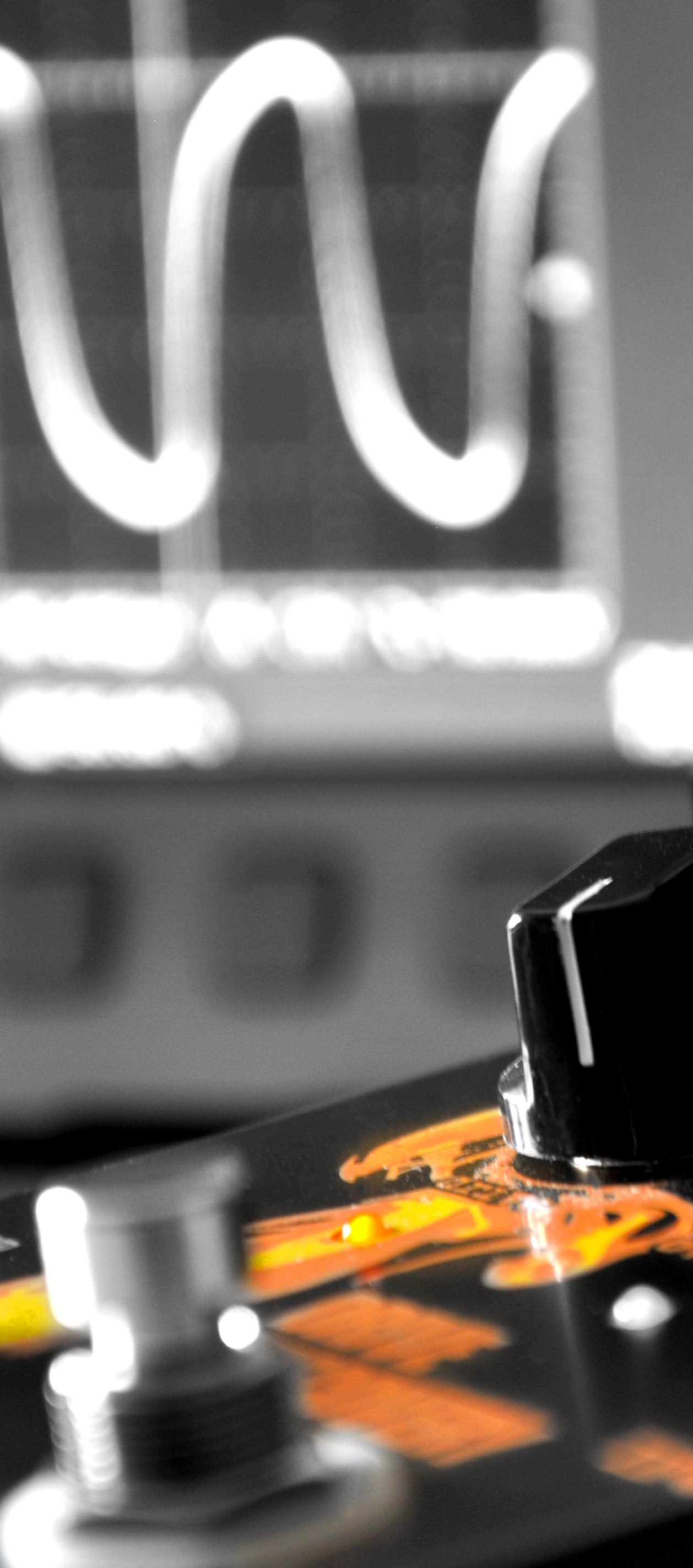Cellular Clipping
Summary
Cellular Clipping™ is a Thrilltone patented technology that allows creating expressive and highly defined saturations, thanks to complex clipping networks integrated into the electronic circuit. Used in an overdrive, this technology brings a remarkable transparency, the “fatness” that is expected from an overdrive, without any compromise with expressiveness and sound accuracy. Implemented in distortion, it brings the expressiveness and the definition that are so often lacking in conventional distortions.
For those who HAVE ASPIRIN ON HAND
Overdrive and distortion, are saturation’s effects that intend to clip prematurely guitar signal in order to add harmonics, and to create a “creamy” sound that has more density. Logically, saturation rendering relies mainly on the clipping’s brutality, i.e. hard clipping will produce let say violent saturation typically used for distortion, and soft clipping will produce smooth saturation, typically those from overdrives.
A bit of theory applied to overdrive
If we focus on the overdrive, the goal is to recreate the natural and warm saturation of a tube amplifier, so the right option seems to be the soft clipping. Most of the overdrives use an amplifier whose output is prematurely saturated by clipping diodes that are integrated into a feedback loop. Character of the overdrive, its dynamics and its transparency, mainly rely on intrinsic characteristics of these clipping diodes, and whatever the technology, clipping diodes always have rude and sudden characteristics. So how the hell could we recreate subtle, smooth and progressive saturations of a tube amplifier, in using components that have quasi-binary behaviors ? From a mimicking perspective, it can be confessed that the use of simple diodes is pretty inappropriate, inasmuch as their characteristics are deprived of shades.
This is exactly to fill this shades void, that “Cellular Clipping™” technology has been designed.
Unlike vintage standard soft clipping structures where clipping is completely brought by a single diode network, a “Cellular Clipping™” overdrive uses several partial clipping cells which are progressively activated until complete clipping has been achieved. In “simple words”, increase of input signal amplitude triggers a first partial clipping cell. This first partial clipping cell allows reducing smoothly signal increase. But signal amplitude keeps growing, until a second partial clipping cell is triggered, and then also contributes to temper signal increase. Then a third cell is activated, and another one and so on… When all clipping cells are engaged, signal stops increasing and is fully clipped. Thus, in order to obtain full clipping, signal must necessarily pass through successive transitory phases, so that a real progressiveness in clipping can be ensured.
Fine, but what does it mean in practice ?
As an example, on a Tube Screamer, signal clipping that allows to generate saturations, is completely provided by 2 diodes, having quasi-binary characteristics. Thus, harmonic content is delivered pretty brutally, which may sometimes give this muddy characteristic to the overdrive. In case of Cellular Clipping™, clipping is diluted into a dozen of partial clipping cells, which are engaged one after another, depending on the playing dynamics. Basically, if you hit the strings stronger, more clipping cells are activated and more harmonic content is delivered… This is the great comeback of expressiveness in overdrive stompboxes…
And what about distortion ?
Interesting fact in Cellular Clipping™ technology is that it can be perfectly implemented as a distortion, in using a “hard clipping” approach. In this case, using a Cellular Clipping™ amplifier brings a lot of gain and preserves dynamics, without brutalizing original signal, just unlike conventional distortions. In this way, we get a distortion that is “dressed” with all Cellular Clipping™ key characteristics : explosive and natural drives, extended dynamics, and remarkable definition whatever the playing style.
Conclusion
Cellular Clipping™ places expressiveness right back in the center of the game, since playing dynamics allows to modulate the number of clipping cells that are engaged, generated harmonics richness can be controlled through playing dynamics. Besides, clipping progressiveness brought by Cellular Clipping™ allows to restitute in much a better way the heat and roundness of tube amplifiers saturation, than any conventional clipping structure, maintaining playing precision even at high gain.



